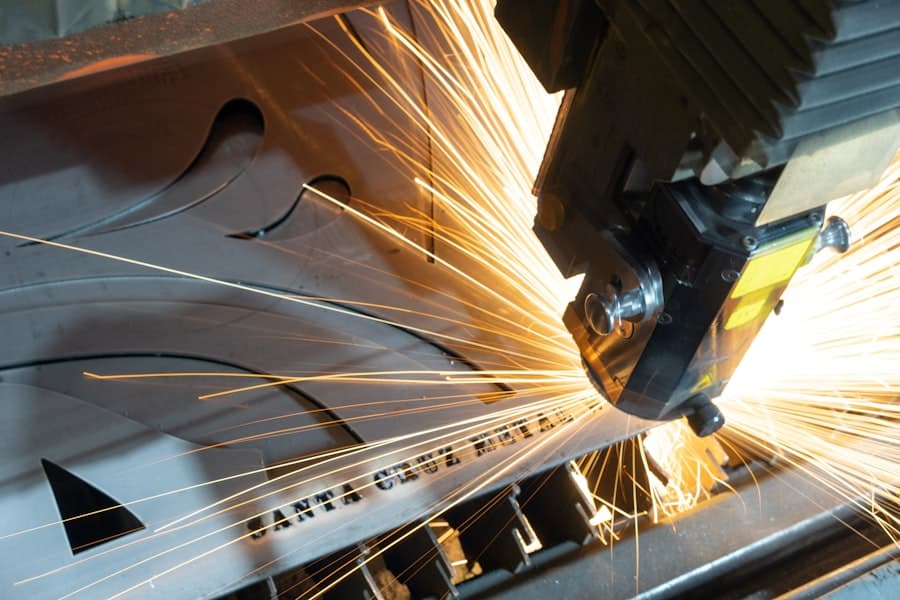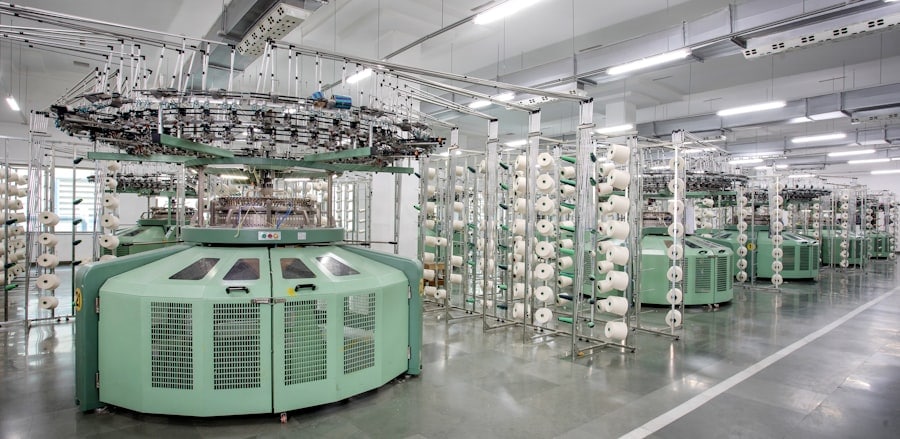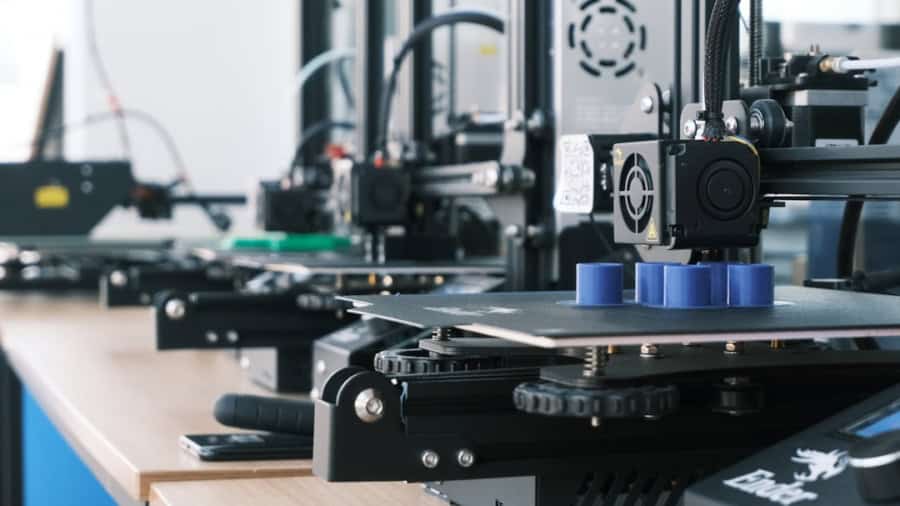The manufacturing sector has long been a cornerstone of economic development, providing jobs and driving innovation. In recent years, the integration of artificial intelligence (AI) into manufacturing processes has emerged as a transformative force, reshaping how companies operate. AI technologies, including machine learning, computer vision, and predictive analytics, are being harnessed to enhance productivity, reduce costs, and improve product quality.
As manufacturers face increasing pressure to optimize their operations and respond to market demands swiftly, AI offers a pathway to achieve these goals through data-driven decision-making. The adoption of AI in manufacturing is not merely a trend; it represents a fundamental shift in how businesses approach production. By leveraging vast amounts of data generated throughout the manufacturing process, AI systems can identify patterns and insights that human operators might overlook.
This capability allows for more informed decision-making and fosters a culture of continuous improvement. As manufacturers increasingly recognize the potential of AI, they are investing in technologies that not only streamline operations but also contribute to sustainability by minimizing waste and enhancing resource efficiency.
Key Takeaways
- AI is revolutionizing the manufacturing industry by optimizing production efficiency and reducing waste.
- Waste in manufacturing processes has a significant impact on costs, resources, and the environment.
- AI is being used to identify and predict waste in manufacturing processes, leading to more efficient operations.
- AI plays a crucial role in optimizing production efficiency by analyzing data and making real-time adjustments.
- AI-driven solutions for inventory management are improving accuracy and reducing waste in manufacturing operations.
The Impact of Waste in Manufacturing Processes
Waste in manufacturing is a multifaceted issue that can take various forms, including material waste, energy waste, and time inefficiencies. Material waste occurs when raw materials are not utilized effectively, leading to excess scrap or defective products. Energy waste arises from inefficient machinery or processes that consume more power than necessary.
Time inefficiencies can manifest as delays in production schedules or bottlenecks in workflows. Collectively, these forms of waste can significantly impact a company’s bottom line, eroding profit margins and hindering competitiveness. The consequences of waste extend beyond financial implications; they also have environmental ramifications.
Excessive material consumption contributes to resource depletion and increases the carbon footprint associated with production. As global awareness of sustainability issues grows, manufacturers are under increasing pressure to adopt practices that minimize waste and promote environmental stewardship. This shift is not only beneficial for the planet but also aligns with consumer preferences for sustainable products.
Consequently, addressing waste in manufacturing processes has become a critical priority for companies seeking to enhance their operational efficiency while meeting societal expectations.
How AI is Identifying and Predicting Waste

AI technologies are revolutionizing the way manufacturers identify and predict waste within their operations. By employing advanced data analytics and machine learning algorithms, AI systems can analyze historical production data to uncover patterns that indicate potential waste sources. For instance, machine learning models can be trained on data related to production cycles, equipment performance, and material usage to identify anomalies that may lead to waste generation.
This proactive approach enables manufacturers to address issues before they escalate into significant problems. Moreover, AI’s predictive capabilities extend to forecasting future waste generation based on current trends. By analyzing real-time data from sensors embedded in machinery and production lines, AI systems can provide insights into when equipment is likely to fail or when processes are becoming inefficient.
This foresight allows manufacturers to implement preventive maintenance strategies and optimize workflows, ultimately reducing the likelihood of waste generation. The ability to predict waste not only enhances operational efficiency but also fosters a culture of accountability among employees, as they become more aware of the factors contributing to waste in their daily activities.
The Role of AI in Optimizing Production Efficiency
Optimizing production efficiency is a primary goal for manufacturers seeking to remain competitive in an increasingly globalized market. AI plays a pivotal role in achieving this objective by enabling real-time monitoring and analysis of production processes. Through the use of IoT devices and sensors, manufacturers can collect vast amounts of data on machine performance, production rates, and worker productivity.
For example, AI can analyze machine utilization rates and suggest optimal scheduling for maintenance or repairs, ensuring that equipment operates at peak efficiency. Additionally, AI-driven simulations can model various production scenarios, allowing manufacturers to test different configurations and workflows without disrupting actual operations.
This capability not only streamlines production but also reduces downtime and enhances flexibility in responding to changing market demands. By harnessing AI for production optimization, manufacturers can achieve higher output levels while minimizing resource consumption.
AI-Driven Solutions for Inventory Management
Effective inventory management is crucial for maintaining production flow and minimizing costs in manufacturing. Traditional inventory management practices often rely on manual tracking and estimation, which can lead to inaccuracies and excess stock or shortages. AI-driven solutions are transforming this aspect of manufacturing by providing real-time visibility into inventory levels and demand forecasting.
AI algorithms can analyze historical sales data, market trends, and seasonal fluctuations to predict future inventory needs accurately. This predictive capability allows manufacturers to optimize their stock levels, reducing the risk of overproduction or stockouts. Furthermore, AI can automate inventory replenishment processes by integrating with supply chain management systems, ensuring that materials are ordered just in time for production without incurring excess carrying costs.
By leveraging AI for inventory management, manufacturers can enhance their responsiveness to market changes while minimizing waste associated with excess inventory.
Implementing AI for Quality Control and Defect Detection

Quality control is a critical aspect of manufacturing that directly impacts customer satisfaction and brand reputation. Traditional quality control methods often involve manual inspections, which can be time-consuming and prone to human error. AI technologies are revolutionizing quality control by enabling automated defect detection through advanced computer vision systems.
These systems utilize machine learning algorithms trained on vast datasets of images to identify defects in products during the manufacturing process. For instance, AI-powered cameras can inspect components on assembly lines at high speeds, detecting imperfections such as scratches or misalignments with remarkable accuracy. This automation not only speeds up the inspection process but also reduces the likelihood of defective products reaching customers.
Moreover, AI can analyze quality control data over time to identify trends and root causes of defects. By understanding the factors contributing to quality issues, manufacturers can implement corrective actions that address the underlying problems rather than merely treating symptoms. This proactive approach enhances product quality while minimizing waste associated with rework or scrap.
Case Studies: Successful Applications of AI in Waste Reduction
Numerous companies have successfully implemented AI solutions to reduce waste in their manufacturing processes, showcasing the technology’s transformative potential.
By analyzing real-time data from machinery and production lines, Siemens has been able to identify energy inefficiencies and implement targeted improvements that have resulted in significant energy savings.
Another compelling case study is that of General Motors (GM), which has employed AI-driven analytics to enhance its supply chain management. By leveraging machine learning algorithms to analyze historical demand patterns and supplier performance data, GM has optimized its inventory levels across its global manufacturing network. This approach has led to reduced excess inventory and minimized waste associated with overproduction.
Additionally, Coca-Cola has utilized AI technologies to improve its bottling processes by implementing predictive maintenance strategies for its machinery. By analyzing sensor data from bottling lines, Coca-Cola has been able to predict equipment failures before they occur, reducing downtime and minimizing waste associated with halted production.
Future Outlook: The Potential of AI in Transforming Manufacturing Processes
The future of manufacturing is poised for significant transformation as AI technologies continue to evolve and mature. As manufacturers increasingly adopt AI-driven solutions, we can expect further advancements in areas such as predictive analytics, robotics, and automation. The integration of AI with emerging technologies like the Internet of Things (IoT) will enable even greater levels of connectivity and data sharing across manufacturing ecosystems.
Moreover, as AI becomes more sophisticated, its applications will expand beyond waste reduction to encompass broader aspects of manufacturing optimization. For instance, advanced algorithms may enable real-time decision-making based on dynamic market conditions or customer preferences, allowing manufacturers to pivot quickly in response to changing demands. The potential for AI to drive sustainability initiatives within manufacturing is also noteworthy.
As companies strive to meet environmental regulations and consumer expectations for sustainable practices, AI can play a crucial role in identifying opportunities for resource conservation and waste reduction throughout the supply chain. In conclusion, the integration of AI into manufacturing processes represents a paradigm shift that holds immense promise for enhancing efficiency, reducing waste, and driving innovation across the industry. As companies continue to explore the capabilities of AI technologies, the future landscape of manufacturing will likely be characterized by increased agility, sustainability, and competitiveness on a global scale.
A related article to How AI Is Reducing Waste in Manufacturing Processes is Top 10 Best Scheduling Software for 2023: Streamline Your Schedule Effortlessly. This article discusses how businesses can optimize their scheduling processes using advanced software solutions. By implementing efficient scheduling tools, companies can improve productivity and reduce waste in their operations.
FAQs
What is AI?
AI, or artificial intelligence, refers to the simulation of human intelligence in machines that are programmed to think and act like humans. This includes tasks such as learning, problem-solving, and decision-making.
How is AI being used in manufacturing processes to reduce waste?
AI is being used in manufacturing processes to reduce waste by optimizing production schedules, predicting equipment maintenance needs, and identifying opportunities for efficiency improvements. By analyzing large amounts of data, AI can help manufacturers make more informed decisions and minimize waste in their operations.
What are some specific ways AI is reducing waste in manufacturing processes?
Some specific ways AI is reducing waste in manufacturing processes include predictive maintenance to prevent equipment breakdowns, quality control to reduce defective products, and demand forecasting to optimize production schedules and minimize excess inventory.
What are the benefits of using AI to reduce waste in manufacturing processes?
The benefits of using AI to reduce waste in manufacturing processes include cost savings from improved efficiency, reduced environmental impact from decreased waste generation, and improved product quality through better monitoring and control of production processes.
Are there any challenges or limitations to using AI in reducing waste in manufacturing processes?
Challenges and limitations to using AI in reducing waste in manufacturing processes may include the initial investment in AI technology, the need for skilled personnel to implement and maintain AI systems, and potential concerns about data privacy and security. Additionally, AI systems may not always be able to account for unexpected variables or changes in the manufacturing environment.

